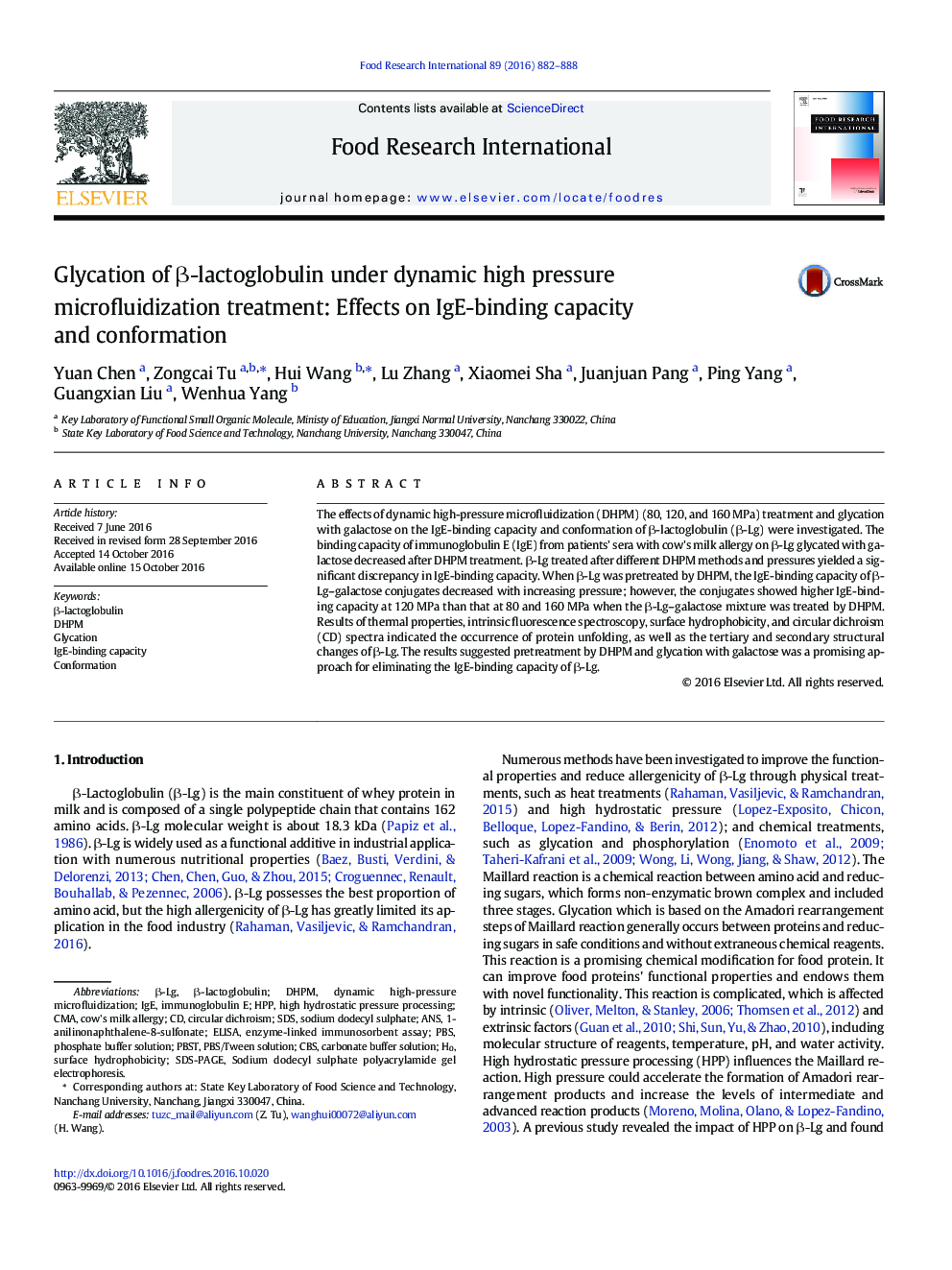| Article ID | Journal | Published Year | Pages | File Type |
|---|---|---|---|---|
| 6394966 | Food Research International | 2016 | 7 Pages |
â¢The IgE-binding capacity of β-Lg after glycation and DHPM treatment was studied.â¢Glycation combined with DHPM caused the unfolding and aggregation of β-Lg, follow by increased denaturation temperature.â¢DHPM treatment decreased the IgE-binding capacity of β-Lg-galactose conjugates.
The effects of dynamic high-pressure microfluidization (DHPM) (80, 120, and 160 MPa) treatment and glycation with galactose on the IgE-binding capacity and conformation of β-lactoglobulin (β-Lg) were investigated. The binding capacity of immunoglobulin E (IgE) from patients' sera with cow's milk allergy on β-Lg glycated with galactose decreased after DHPM treatment. β-Lg treated after different DHPM methods and pressures yielded a significant discrepancy in IgE-binding capacity. When β-Lg was pretreated by DHPM, the IgE-binding capacity of β-Lg-galactose conjugates decreased with increasing pressure; however, the conjugates showed higher IgE-binding capacity at 120 MPa than that at 80 and 160 MPa when the β-Lg-galactose mixture was treated by DHPM. Results of thermal properties, intrinsic fluorescence spectroscopy, surface hydrophobicity, and circular dichroism (CD) spectra indicated the occurrence of protein unfolding, as well as the tertiary and secondary structural changes of β-Lg. The results suggested pretreatment by DHPM and glycation with galactose was a promising approach for eliminating the IgE-binding capacity of β-Lg.
Graphical abstractDownload high-res image (197KB)Download full-size image
